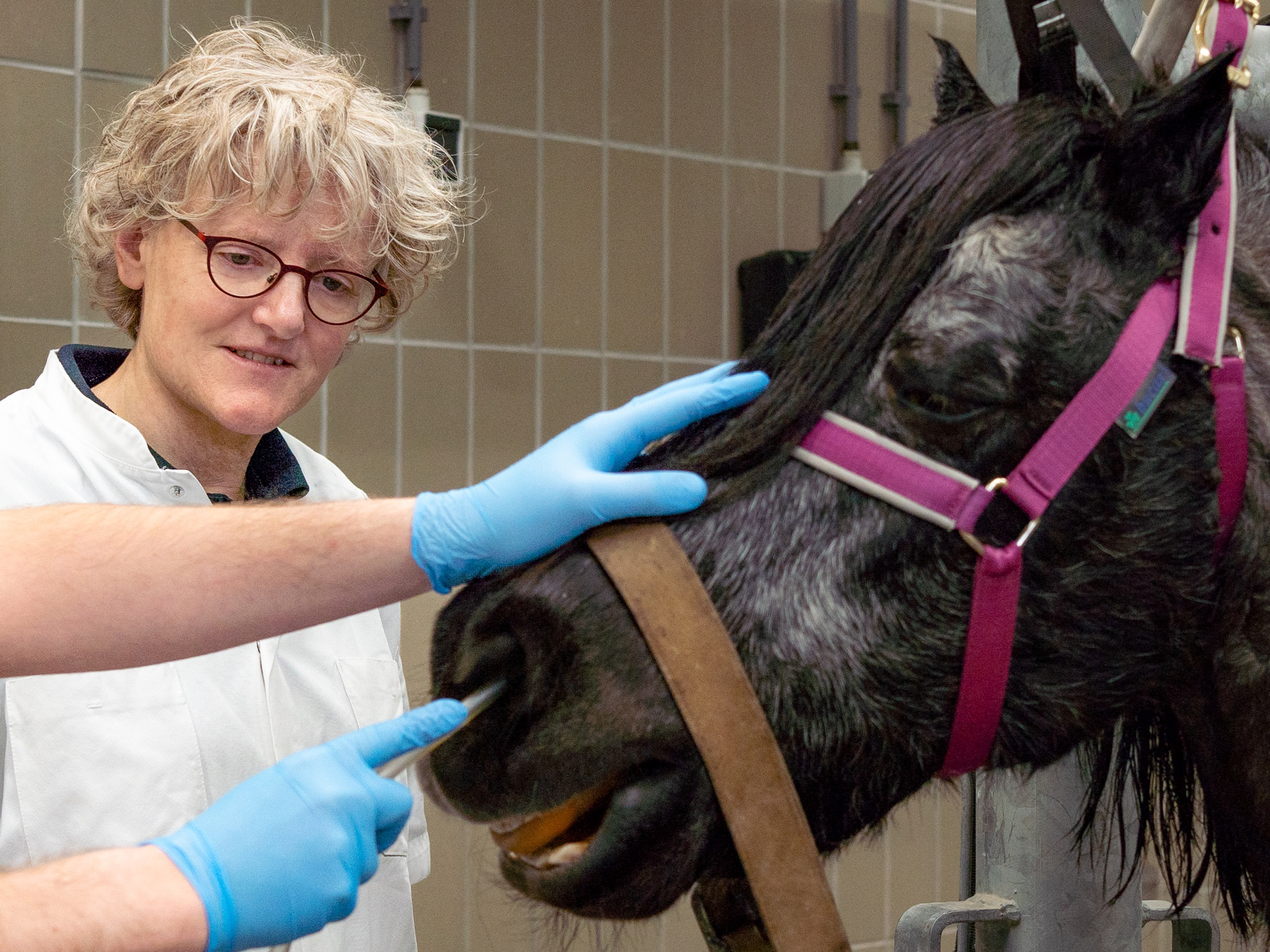3Rs Stimulus Fund: saving horses’ lives
3 years agoDr. Cornélie Westermann, educational director of the master’s programme within the faculty of Veterinary Medicine, is also an internist with the Equine Internal Medicine division. Her keen instinct for innovation led her to devise the plastinate model that students use to learn how to pass a nasogastric tube in a horse, something that can often save its life.
Let’s start with a practical question: what is a nasogastric tube?
Let me start by saying that horses have a virtually unique and terribly inconvenient feature: they can’t vomit. If they get a colic, say if their small intestine is twisted or obstructed, the large amounts of digestive juices they secrete can’t move, and they get stuck in their intestinal tract. The stomach swells up and can rupture, and horses can often die from it. What we do is to insert a fairly wide tube through the nose. Once it gets to the throat, the horse has to swallow it, and then we can gently push the tube through the oesophagus and into the stomach. Then we can pump out the excess gastric juices.
Does every vet student have to learn to do this?
Absolutely. We want every veterinary master’s student to be able to do this well, since it can save a life and has a few other uses as well. We may need to pass a tube to administer medication, for example, or use it in force feeding. Sometimes donkeys and ponies lose their appetite and come into a negative energy balance, which makes them sick. We also tube-feed foals who are too weak to drink. That’s why all of our students practice on our teaching horses during their practicum weeks, before they start doing clinical internships.
So do those teaching horses have to take a lot of rough handling?
I think that’s putting it too negatively. Our horses really have a good life with us. They live in group housing, they can go outside all year round if the weather is good, so they get all the exercise they need, and each one has its own rider. But we do want to put as little strain on them as we can. Clinical research, like listening to their hearts, is something they really enjoy. Sometimes we have to give them injections or draw blood, but after that we give them a lot of time off. But the tubes make them really irritable. They know what’s going to happen just from seeing that tube. We want our horses to stay happy and healthy with us for years and years.
And so you dreamed up an ‘artificial horse’?
No, this is much more practical and targeted than a whole horse. We had already tried out something with a small model, with only a nose. Then we hung a few vacuum-cleaner hoses with some other things in a rack, at horse height. But it didn’t really work well, or actually, it really didn’t work well. We have the ‘Centre of Excellence for Plastination and Virtual Reality’ here, with a recognised plastinate expert, Arend Schot. What we needed was a plastinate of a horse head, throat, oesophagus, windpipe and stomach. It’s a really big area to plastinate, but they managed to make one. I think it looks great. In April we’ll hang it in the rack that we already had. Then we’ll monitor students’ learning experiences for a few months. If they’re positive, then I’ll really be enthusiastic.
Are you going to share that enthusiasm?
I’m certainly planning to. With the instructors here of course, and we’ll also use it in any continuing education courses. Mostly, though, we’ll share it with sister faculties abroad. As the only Veterinary Medicine faculty in the Netherlands, we have a lot of contacts in Europe and the US. There’s not another plastinate like this anywhere. If we like it, we’ll do demonstrations at congresses, possibly with videos, maybe also with results of the self-confidence tests among the students. It’s pretty clear that if it helps our animals, it will help animals worldwide.
Did the support from the 3Rs Stimulus Fund play a big part in developing the model?
Their support absolutely helped us over the hurdle. If there is an external party that demands a real result involved in a project this is an extra incentive to really finish it and work a bit harder on it. We are grateful to the 3Rs Stimulus Fund.
How far back does your own love of horses go?
Not nearly as far as many of my colleagues. They often had horses around them as young children. After spending most of my youth playing ball sports, I more or less fell into the horse world. I’ve been working with horses non-stop since 2000. I’m a fanatical doctor, but I’m the worst rider of all my colleagues. However, I get on well with both horses and their owners. Horse owners are usually even much more emotionally involved with their animals than dog or cat owners. That’s undoubtedly reflected in how well we want to treat our teaching horses.


